The Genius of the Orient: Modern Europe and the Arts of Islam
Jun 28, 2011 Exhibition
In the 19th century, Europe revived its interest in the Islamic arts. The tremendous increase in travel to the East and cultural exchanges at the time facilitated the constitution of western collections of Islamic art. Often spectacular, these collections exhibited the fascination of the West for the Muslim world. Carpets, textiles and objects fashioned out of precious metals or wood inlaid with ivory introduced into Europe a new repertory of forms, motifs and techniques. These collections, both private and public, helped to produce a new way of seeing that is still with us today.
The Genius of the Orient: Modern Europe and the Arts of Islam, curated by Salima Hellal and Rémi Labrusse, evinces how the modern rediscovery of the Islamic arts shaped European art in two very different ways. On the one hand, Orientalist painting often inspired by Islamic architecture conjured up fabled fantasies of palaces and harems. On the other, theoreticians of ornament and architecture, and later avant-garde artists, looked to Islamic art for the new visual codes it proposes and which, in effect, assisted the modern radical transformation of western codes of representation.
The exhibit showcases both, highlighting the unique individual trajectories of travellers, collectors, painters, architects and designers, all fascinated by Islamic art and culture as the West underwent its crisis of representation. The exhibit closes on a note of utopian hope, evoking the period shortly before WW1, in which modern artists, such as Henri Matisse or Paul Klee, dreamt of a harmonious fusion of the western and eastern gaze.
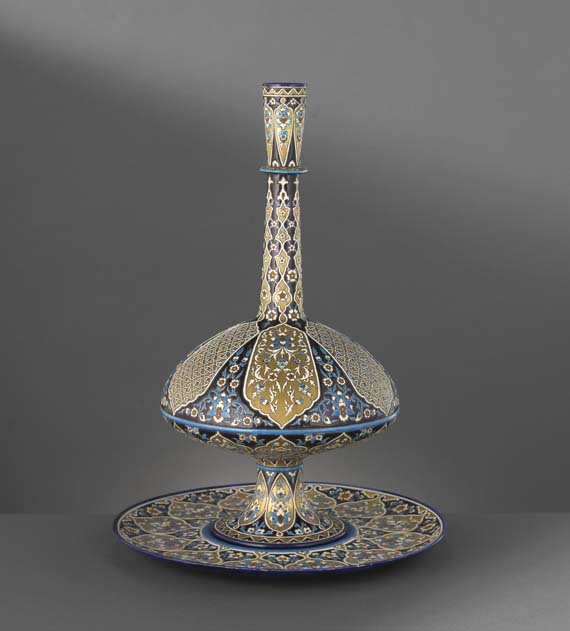
Handicraft by Jules Vieillard et Cie, Vase with Dish (according to the Rothschild Vase), around 1878. Porcelain and enamel on round relief, H. 57 cm; W. 41 cm. Paris, Musée d’Orsay. © RMN (Musée d’Orsay) / René-Gabriel Ojeda
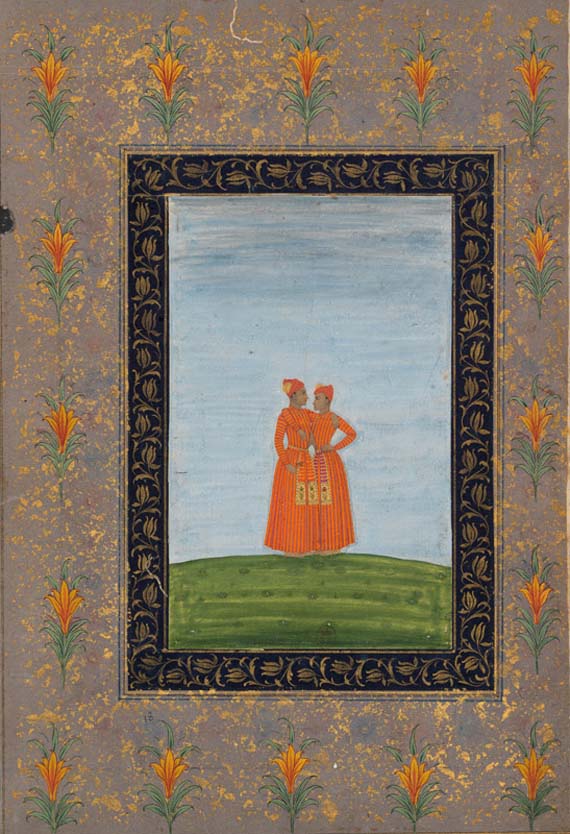
Siamese twins, Album “Persian and Persiansâ€, F ° 15, India (Faizabad), around 1765. Gouache and gold on paper, H. 21.5 cm, W. 13.5 cm (image), H. 40.3, W. 27.3 cm (frame). Gift of Colonel Gentil, 1785, Paris. © French National Library, Paris.
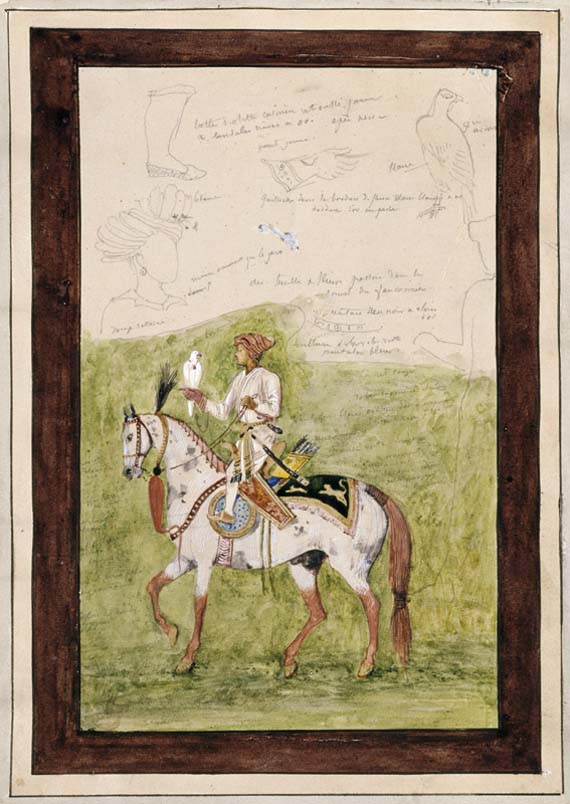
Gustave Moreau (1826- 1898), Study of Indian falconer on horseback. Notebook of Oriental Studies, graphite, watercolor and white gouache. H. 24.3; W. 15.7 cm. Paris, Musée Gustave Moreau © RMN (Musée d’Orsay) / René-Gabriel Ojeda
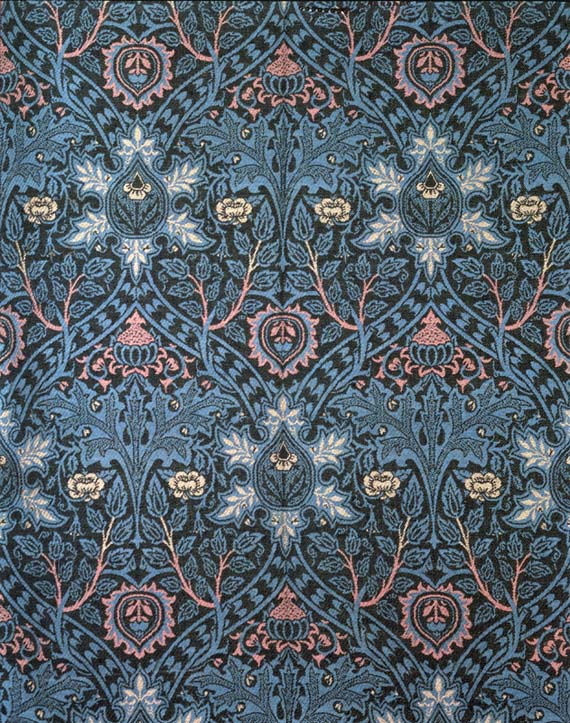
Henry John Deare (1860 - 1932), fabric for furniture, “Esfahan”, around 1888, woven wool, H. 191 cm; W. 132 cm, London, Victoria & Albert Museum © V & A Images / Victoria and Albert Museum, London
Mariano Fortuny and Madrazo (1871 - 1949) Carpet Seller, 1870. Watercolor on paper, H. 59, W. 85 cm Donation by Ardiz J. Sala, Montserrat, Museu de Montserrat © Museu de Montserrat - Abbey and Sanctuary of Montserrat
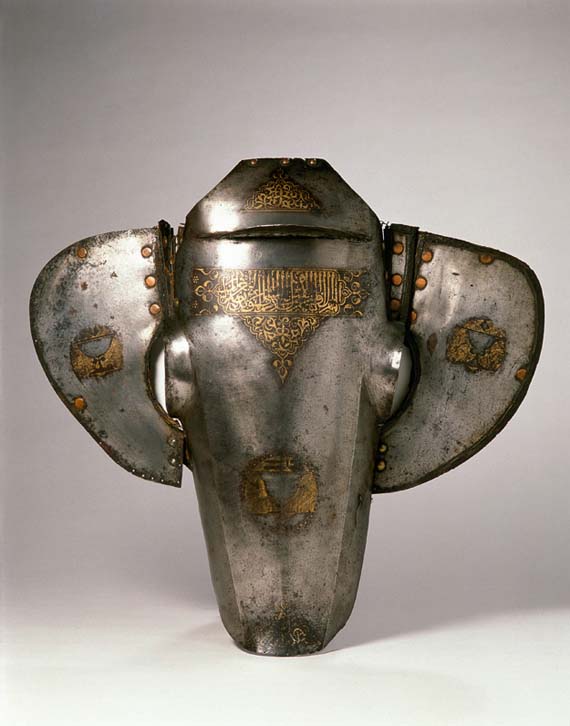
Armor for a horse’s head, Syria, around 1419, the plated steel sheet. W. 50 cm, Ancienne collection Albert Goupil © Lyon, Musée des Beaux-Arts
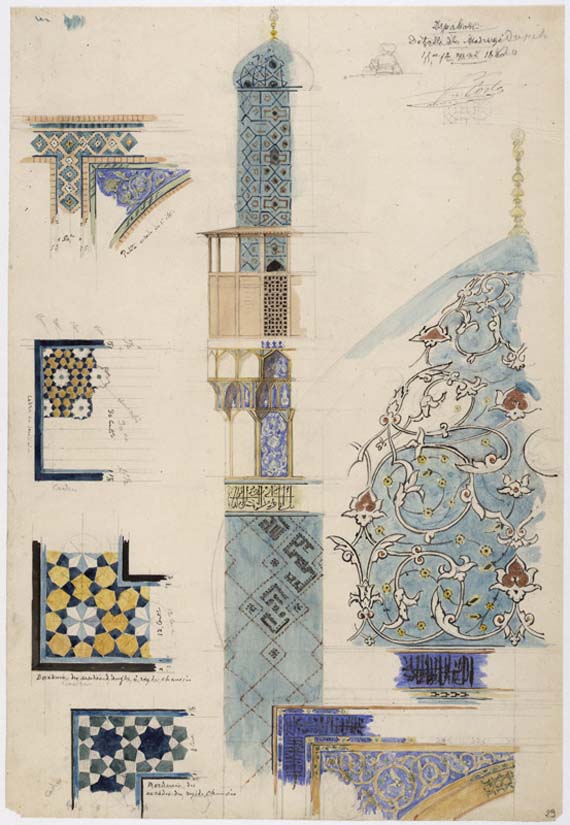
Pascal Coste (1787-1879). Details of the madrassas [Chah-Sultan-Hussen], In the modern monuments of Persia, 1867, Esfahan, 11th and 12th of May in 1840. Pen and watercolor on paper, Marseille, Municipal Library Alcazar. © BMVR Marseille
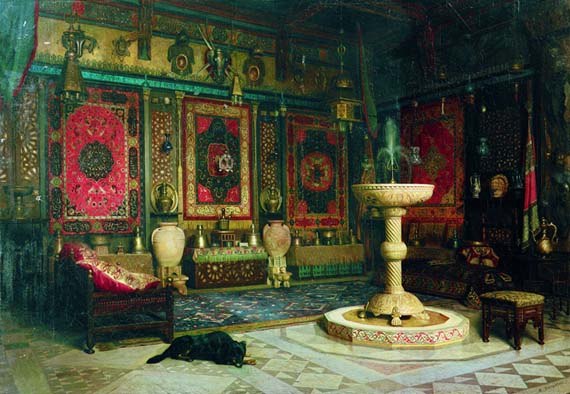
E. Duranton, At the Goupil family, around 1870-1884, coll. part. © ACR / DR
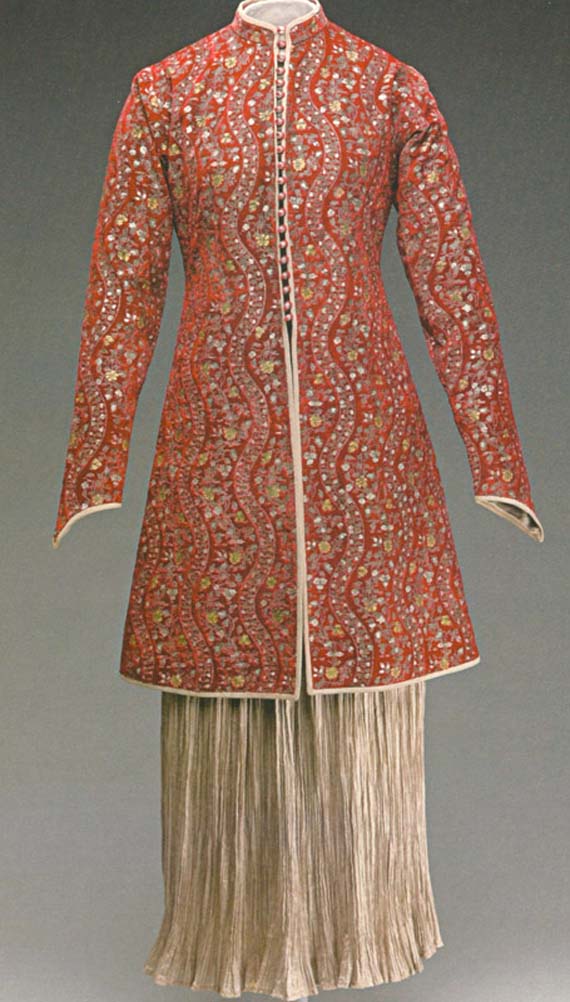
Mariano Fortunity and Madrazo, Short coat. around 1930. Silk Velour ... colors, printed with gilded or silvered decorations, Madrid, collection particuliere © Coll. particuliere.
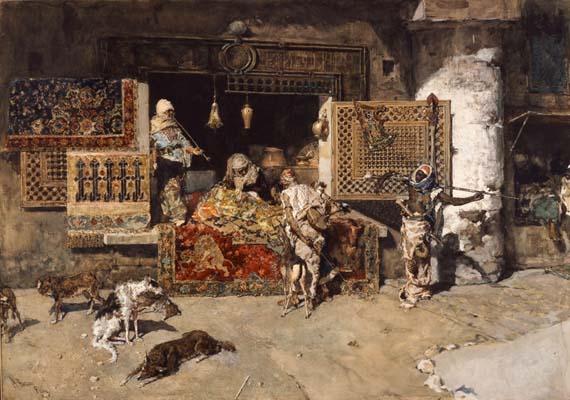
Mariano Fortuny i Marsal, Carpet Seller, 1870, watercolor on paper © Museum de Montserrat-Abbey and Sanctuary of Montserrat
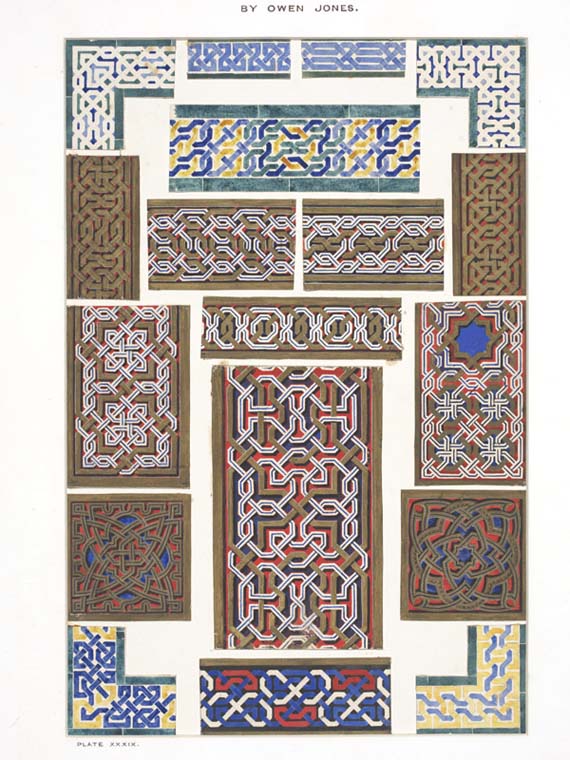
Owen Jones, Moresque n ° 1, a project for The Grammar of Ornament, 1856. Ink and watercolor on paper. London, Victoria & Albert Museum. © V & A images / Victoria and Albert Museum, London
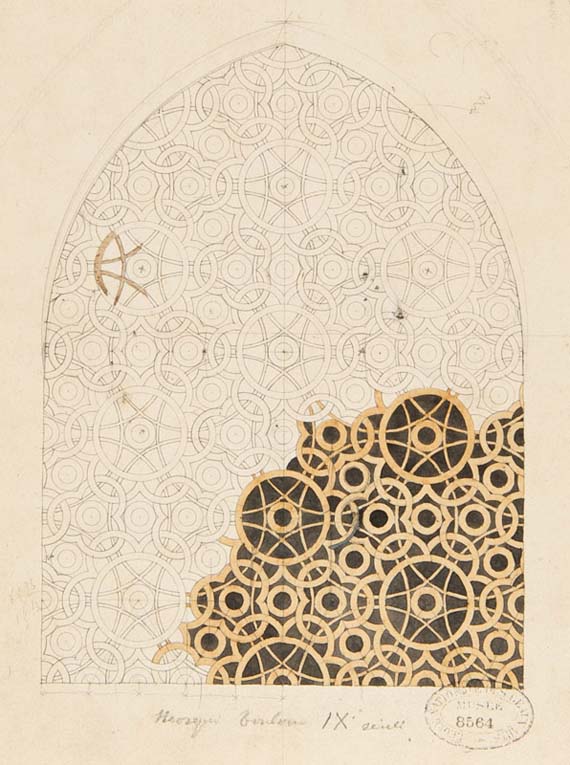
Jules Bourgoin, Mosquée Touloun, 19th century. (Study of the floors and details, the mosque in Touloun. The first panel shows hexagonal grid in the Arabic art, 1868-1873, pl. 85) s. d. 1863-1868. Pencil, pen, ink and watercolor on paper. Paris, © Higher National School of Applied Arts.
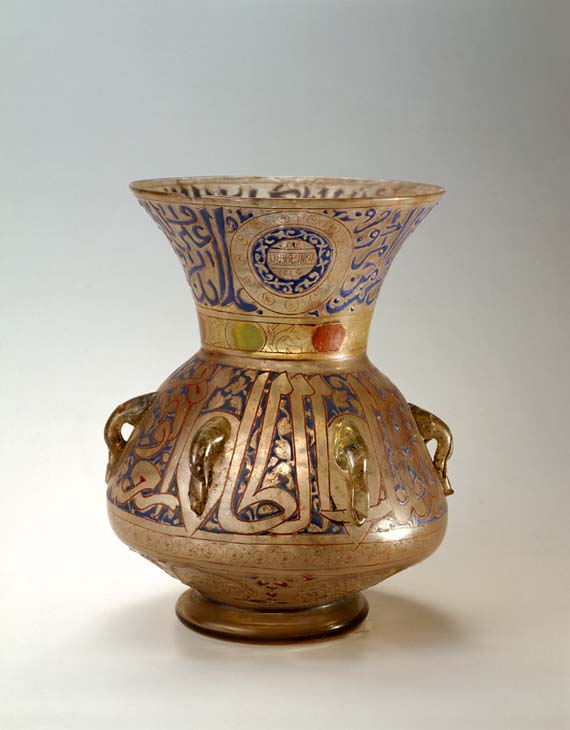
Lamp in the mosque of Sultan Barquq, Egypt or Syria, late 14th century. Enameled and gilded © Lyon, the Museum of Applied Arts.
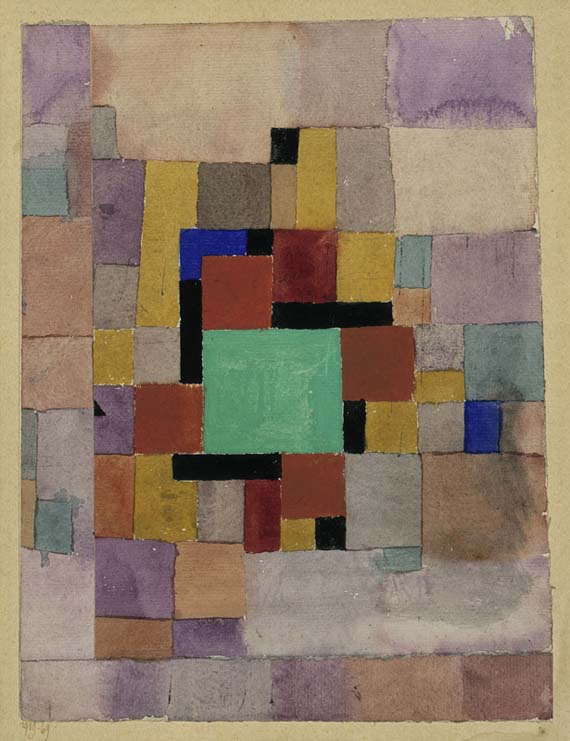
Paul Klee, Mit dem grünen Quadrat [With the green square], 69, 1919, watercolor on paper, Gretchen and John Berggruen, San Francisco
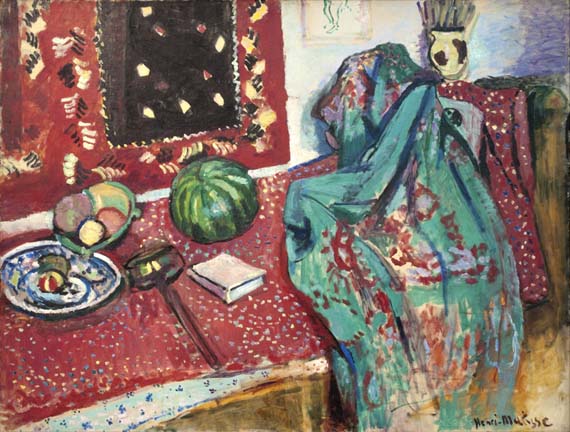
Henri Matisse, Red carpets, the summer of 1906, oil on canvas, Musée de Grenoble © Succession H. Matisse
http://www.mba-lyon.fr/mba/sections/languages/english/museum/welcome-museum-lyon
Comments
Add a comment